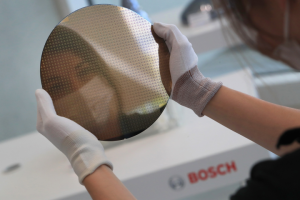The Berkeley engineering students completed a novel chip design in just one semester! The class demonstrates a successful model of expanding into the field of semiconductor design.
In terms that may have an important impact on engineering education and chip design, a class of Berkeley College of Engineering has successfully completed the design process of a new chip that will be manufactured this summer-or will go for “tape out.” As part of the advanced thematic course of circuit design this spring, 19 students with no previous chip design experience went from basic introduction to tapeout at the end of the four-month period.
The pandemic has aggravated the current global shortage of semiconductor chips and has become the headline news of the technology industry. This prompted the leaders of China and the United States to declare chip manufacturing as a national priority. Earlier this year, President Joe Biden signed an executive order reviewing the semiconductor supply chain. The legislation recently passed by the Senate will provide US$52 billion for domestic semiconductor manufacturing and R&D.
Electrical engineering and computer science professor Borivoje Nikolić is one of the three professors of this course. He said that even if investment increases, there are still many obstacles, including the lack of potential chip designers in the US job market that has been building for years. Although the lack of available labor to increase chip production and meet growing demand is itself caused by a series of factors, a potential solution is to expand access to the field, which has long been dominated by doctoral candidates. The success of the UC Berkeley circuit design course shows that expanding the talent pool to undergraduates may be a viable solution. Nikolić said: “This is a rapidly changing field, and the industry hopes to always allow people to introduce new ideas with a new mindset.” “Our view is that not everyone needs to have a Ph.D. There are people with less academic experience. Space.”
Not only does it take much less time to train undergraduates and graduate students to do this kind of work than a PhD. Nikolić added that the procedure, but also much cheaper. “Let us equip them with the appropriate skills so that they can design chips.” The new chip design shows the “tabling out” of the new chip design completed by the students of Berkeley College of Engineering. The term “tas-out” refers to the process of recording the final design of a chip and delivering it to manufacturing-in this case, the Taiwan Semiconductor Manufacturing Company. This used to be processed via tape, but now happens electronically, converting digital files into physical chips.
With the support of Apple, Professors Nikolić, Kris Pister and Ali Niknejad, and graduate tutors Dan Fritchman and Aviral Pandey led 10 undergraduates, 5 masters and 4 doctoral students. Candidates design and successfully tape out new chips within a semester. Berkeley has never done this before. Pister said: “This proves that our students, teaching assistants, and faculty can do this. It also proves the chip design infrastructure that Berkeley has built over the past ten years.” “It’s really amazing, when I tell them we When I did something, most of the people I talked to didn’t believe me.”
Niknejad’s view is equally exciting: “In my opinion, what we have achieved in this course is a small miracle…. Recording tape is a marathon and requires a lot of mental and physical perseverance. , And our students have exactly this.” Technically speaking, the students designed the so-called “system on a chip,” which combines multiple components of a computer or other electronic system on a single integrated circuit or chip. This includes microprocessors, encryption devices, low-energy radio transceivers (such as Bluetooth) and other modules. Nikolić said the chip is of medium complexity—similar to the chip used to track and locate other items found in the new Apple AirTag—and will be manufactured in industry by a dedicated design team using the same 28nm CMOS process.
“We want to encourage students who are interested in hardware to stay on the hardware,” said Jared Zerbe, Apple’s director of engineering who oversees the company’s financial and technical support for the course. “In general, the semiconductor industry has always been the engine of Silicon Valley. We are now entering the golden age of computer architecture. This is a huge opportunity for innovation.” Jeffrey Ni is one of the undergraduates taking this course. He recently obtained degrees in electrical engineering and computer science, but will return next fall to study for a fifth-year master’s degree. He said he hopes to continue working on chip design next year, and this summer he will work at Apple as an intern-and some other alumni of the course. “The opportunity to make real chips in a classroom environment seems like a once-in-a-lifetime opportunity,” Ni said.
At the other end of the academic spectrum of the class is Nayiri Krzysztofowicz, a first-year PhD. Learn digital circuit design, with suggestions provided by Nikolić. “If I hadn’t taken this course, I’m not sure when I would be able to tape out, and the speed would be much slower,” she said. “I think it just pushed me in the right direction, and now I find that all the other research I’m doing is much easier. For what I need to know, this is really a very intense crash course.”






